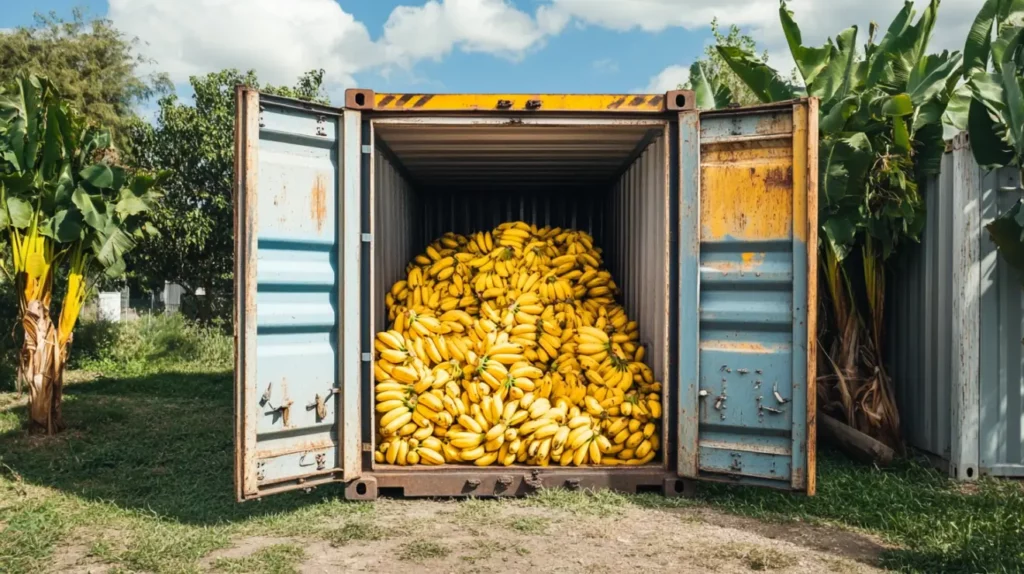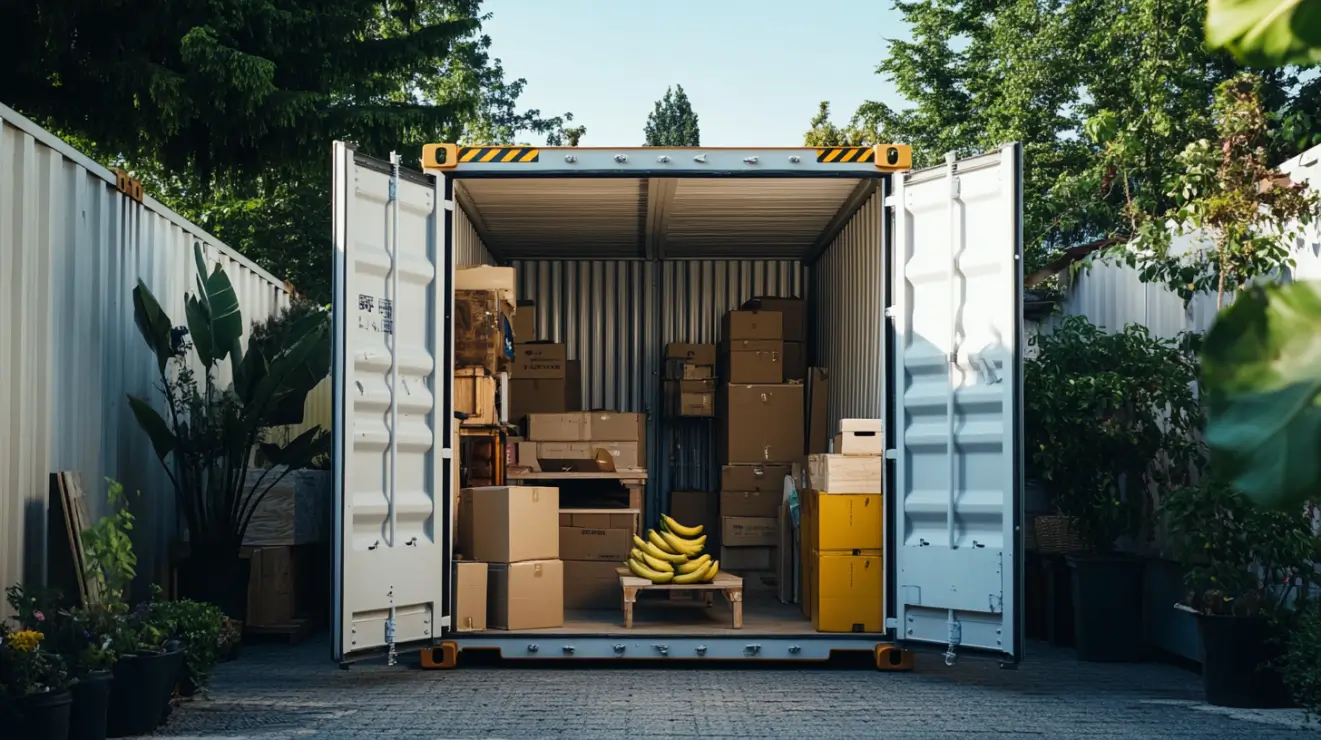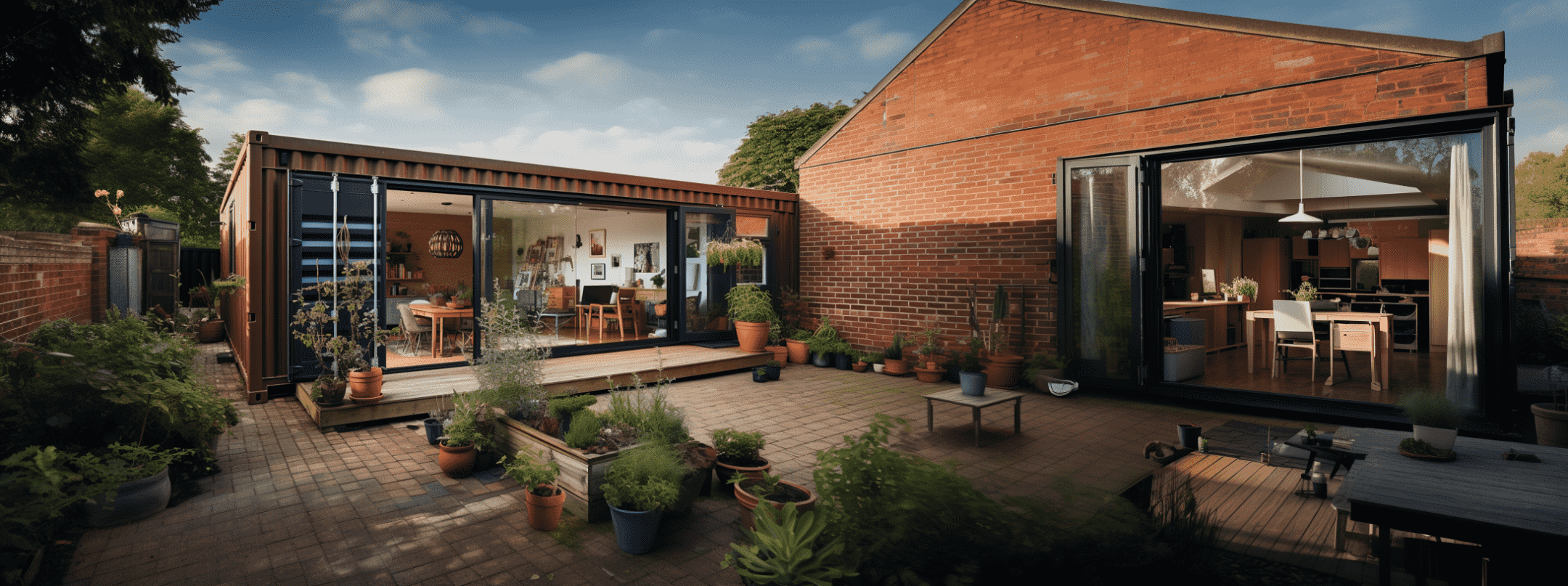The 20ft shipping container is by far our most popular size, and it’s easy to see why – it’s the go-to choice for anyone looking for a practical and versatile storage solution. The perfect mix of size, flexibility, and convenience, it’s used for everything from storing equipment and moving goods to building workshops, mobile offices, and even tiny homes.
With so many practical uses, it’s no surprise that millions are in use worldwide. But just how much can you actually fit inside a 20ft shipping container? Let’s break it down.
What is a 20ft shipping container?
While there are many sizes and types of shipping containers available, a 20ft shipping container stands out as a true asset in the shipping industry, offering a versatile solution for the global transportation of goods. Made from corten steel, a tough, weather-resistant material designed to withstand the harshest conditions, it offers unmatched strength and lasting durability.
Once primarily used for overseas shipping, these containers have evolved into much more. Today, a 20ft shipping container isn’t just for shipping – they’ve become a top choice for storage and creative conversions, easily transforming into anything from a garden office to a home gym. For anyone looking for a reliable storage solution or a unique space for a project, the 20ft container is the perfect fit.
20ft shipping container dimensions
When considering how to use your shipping container and how much you can fit inside, understanding the dimensions and capacity of different container sizes is crucial. Whether you’re packing a shipping container for stationary storage or filling it up for transportation, it’s important to maximise the available space. Not only does this help you fit more in your container, but it will also ensure greater cost efficiency and keep your goods secure during transit.
20-foot shipping containers, as their name suggests, measure 20 feet in length, 8 feet in width, and 8.6 feet in height. This equates to a total volume of approximately 1,172 cubic feet. You should also consider the internal dimensions, which are 19.4 feet in length, 7.9 feet in width, and 7.10 feet in height.
The metric measurements of a 20ft shipping container are:
External: 6.06m long x 2.44m wide x 2.59m high
Internal: 5.90m long x 2.35m wide x 2.39m high
What fits in a 20ft container?
Now down to the nitty gritty. You can fit a variety of items into a 20ft shipping container, no matter whether you’re using it for storage, transportation, or modification into a converted space. In most cases, you’ll need to know what fits into a container for storage and transportation, whether you’re loading furniture, boxes, or pallets into your 20-foot unit.

To illustrate the sheer size of these units, and for a little bit of fun, here are just some of the items you can fit into a 20ft container:
- 2 cars
- 60 refrigerators
- 4,000 shoe boxes
- 37,976,526 paper clips
- 168 Nascar tyres
- 1,021 60lb bags of cement
- 7,344 gallons of water
- 48,000 bananas
- 7,816 reams of paper
- 1,512 cases of cans of Coke
- 486,799 eggs
- 3,962 2x4x8 planks of wood
- 400 flat-screen TVs
- 9,600 wine bottles
- 200 mattresses
How many boxes fit in a 20ft container?
From packing up a house to storing excess or seasonal business items, it’s useful to know how many cardboard boxes can fit into a 20-foot shipping container. Depending on the size of the boxes you’re using, this can vary greatly.
As a guideline, businesses storing small archive-type boxes can typically squeeze in around 933 average-size archive boxes – give or take if the boxes are slightly bigger or smaller. However, the average Joe is more likely to fit 200-300 cardboard boxes into a 20ft container, especially if they’ve never taken part in a game of ‘shipping container tetris’.
How much furniture can fit in a 20ft container?
Shipping containers offer an excellent solution for furniture storage, from temporary storage while moving house to a more permanent option if you’re a business that regularly requires a space to hold furniture. If you’re moving furniture, for household moving, you can typically fit all of the following furniture into a 20ft container:
- 2-3 sofas
- 2 double beds – including frames & mattresses
- 1 dining table with 4 chairs
- 1-2 TVs
- 1 stereo system or other electronics
- 1-2 large dressers or wardrobes
- 2-3 side tables or smaller dressers
- 3-4 large appliances like refrigerators, washers, or dryers
- 3-4 bookcases or small cabinets
Of course, fitting all the above items into a 20ft storage unit will depend greatly on the size of each item, but as a guideline, the above should all fit comfortably. This setup is reminiscent of moving an average home’s worth of furniture, but depending on your items you may just need to get a little creative with how you stack and pack.
For those using a 20ft shipping container to store furniture for business purposes, things may look a little different. Depending on the items, their sizes, and how efficiently you pack them, here are some examples of furniture you can fit into a 20ft unit for business purposes:
- 65 standard sofas
- 100-110 armchairs
- 90-100 coffee tables
- 140-150 dining chairs
- 140-150 office chairs
- 90-100 bed frames
- 200 mattresses
- 20-25 dressers or wardrobes
- 40-45 bookshelves or small cabinets
*Not all of the above items will fit into a shipping container at the same time – each example highlights a type of item and the quantity you could fit inside the entire unit, i.e. 26 sofas OR 100 armchairs.
Need a simple solution to prevent damp and condensation in your shipping container?
Check out our damp sticks – easy to use and highly effective in keeping your goods dry, so they stay in perfect condition during storage and transit.
Buy damp sticksHow to pack and load items into a 20ft shipping container
If you’re using a 20-foot shipping container for storage or transportation, it’s vital that you adequately prepare and understand how to pack your container up efficiently. Before you start, we recommend writing an itemised list of everything you want to pack so you have a clear picture of what needs to be done.
No matter what you’re packing, you’ll want to ensure bulky or heavy items are placed at the back of the container first. You can then start to fill in the gaps with smaller items. You should also try to give yourself a narrow walkway down the middle of the container so you can move in, out, and around easily.
How to pack furniture into a 20ft container
With furniture coming in all shapes and sizes, it can be tricky to pack furniture into a shipping container efficiently. However, there are some key tips you can follow to ensure you maximise the space while keeping your items safe and secure.
- Dismantle any items that can be reassembled before carefully packing them in boxes.
- Protect your items with plenty of bubble wrap.
- Organise and label furniture parts so you can reassemble them more easily and efficiently.
- Keep screws, bolts, and other small parts in a labelled bag – ideally, one bag per piece of furniture.
- Pack heavier items first, before stacking lighter boxes and pieces of furniture on top.
To strategically maximise the space in your 20ft container, disassembling furniture into parts is key. Breaking items down into smaller parts not only helps you pack more efficiently but also reduces the risk of damage during transit, ensuring everything arrives in perfect condition. By making everything smaller, you’ll have a much denser packing configuration which means you may be able to fit even more in the unit.
Packing strategies for maximising space in your 20ft container
While there are a few basics to understand when it comes to packing and loading a shipping container efficiently, there are several effective packing strategies you can use to maximise the available space. We’ve already discussed how disassembling furniture can help you fit more into your container, but there are a couple of other strategies to employ too.
Create a loading plan based on item size
Before you start packing up your container, you should craft a loading plan that considers the size of each item. You’ll want to ensure you know the accurate sizes of each item so you can figure out how to pack them to maximise space. This careful planning will help you enhance the efficiency of the container’s capacity while simplifying and streamlining the loading process.
It’s helpful to imagine a cross-section of your 20ft shipping container. The bottom layer would be loaded with heavy items such as beds or sofas, with middle-weight items such as tables or chairs on top. Finally, you would load lighter items on top of this, such as light boxes or fragile items.
Considerations for your loading plan include:
- Packing heavier items like sofas and wardrobes at the bottom of the container and towards the back, maintaining a low centre of gravity.
- Ensuring both sides of the container have an even weight distribution to prevent tilting. For example, if a heavy sofa is placed on one side, you’ll need to balance it with a similarly weighted item on the other side.
- Utilising vertical space by stacking lighter items like chairs on top of heavier pieces. Ensure all lighter items are securely wrapped and tied down so they don’t move during transit.
- Strategically placing fragile items between mattresses and other soft, cushioning materials to protect all sides.
Use all the available space, including corners
A 20ft shipping container is a large bit of kit, so you may feel like you have plenty of space to simply load without consideration. However, space gets filled up pretty quickly, especially if you’re packing large items and furniture. You must use all the available space in your container to make the most of it while reducing the risk of damage and movement during transit.
- Use smaller items or disassembled parts to fill in the gaps between larger pieces of furniture, maximising space and adding stability.
- Use soft items for padding and protection like pillows, blankets, or foam. These can fill corners and protect fragile items while utilising every inch of space.
- Use the natural shape of furniture to nest items together and utilise empty spaces. For example, you could fit chairs into the underside of a table.
How much does it cost to ship a 20ft container?
There’s a lot to think about when it comes to shipping containers, from the price of the shipping container to deciding whether to buy or hire a container to how much it will cost to transport your goods.
Shipping a 20ft container will vary in price depending on a number of factors, including:
- The types of items you’re sending
- Where the items are going
- The method of transport
- The weight of the container
Every transport provider will charge slightly differently, so to ensure you get an accurate quote and avoid unexpected fees, you need to have a thorough loading plan. With a plan in place, you can provide accurate information about your load, the container weight, and other factors that will impact the cost.
The bottom line
While we know it’s unlikely you’ll be loading a 20ft shipping container with 48,000 bananas, simply knowing the possibilities of 20ft container storage can help you realise just how vast these units are. Understanding how much you can fit inside a 20ft shipping container is paramount when packing and loading your unit, whether you’re using it for storage, transportation, or a conversion.
We offer containers for hire at our secure site in Manchester, located close to the M60 & M62. In addition to this, you can buy our shipping containers either new or used for domestic or commercial use, for a multitude of purposes. With a 20ft container, there are very few – if any – limits!
If you would like a friendly, honest chat about choosing the correct 20ft shipping container to suit your needs, fill out our contact form or give us a call at 0161 775 3217 – no obligations attached, just helpful advice to guide you in the right direction.
Looking for a completely custom solution?
We have a wide range of base containers that can be customised to your needs, however we
realise
that
sometimes you need something completely ‘Outside the box’.
Contact us and one of our experts will be in touch to help design the container of your
dreams





